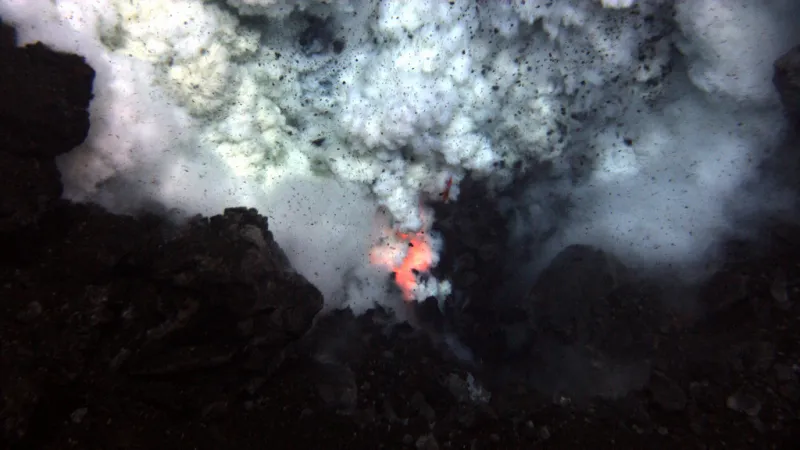An Underwater Volcanic Eruption

How do underwater volcanos work? For the most part, we don't know. More than 70 percent of all volcanic eruptions occur underwater and scientists are in the dark when it comes to understanding underwater volcanoes because the eruptions are cloaked from view by thousands of feet of water.
Here, a volcanic eruption of superheated magma (some 2,200 degrees Fahrenheit) from the West Mata Volcano produces a bright flash of hot magma that is blown up into the water before settling back to the seafloor. The explosion throws ash and rock into the water, and molten lava glows below. This volcano is in the Pacific Ocean near Fiji. Its top is nearly a mile below the ocean surface (1165 meters / 3882 feet) and its base descends to nearly two miles (3000 meters / 9842 feet) deep. (Watch a video of submarine volcanoes erupting.)
In any volcanic eruption, magma (molten rock beneath the Earth’s surface) rises from the depths of the Earth to the surface of the land or the seafloor. The magma contains dissolved gases, which form bubbles as the pressure on the magma is reduced during its ascent. An explosive eruption occurs on land when these dissolved gases are released suddenly—think of the bubbles in a coke bottle spurting out when a shaken bottle is opened and the pressure is released all at once. But underwater the magma still faces the crushing pressure of tons and tons of ocean water once it reaches the seafloor. The Havre volcano, stretching between 3,000 and 4,000 feet below sea level, experiences a pressure between 92 and 122 times that of sea level, which scientists suspect dampened its explosiveness and shaped the various types of lava formations.
Not only does pressure change how lava forms, the interaction between the water and the cooling magma is completely different than when magma interacts with air. When water hits hot magma at 800 degrees Celsius it vaporizes in an instant. Its rapid expansion into steam can be strong enough to break the lava apart. On the flip side, when magma comes in contact with water the temperature change is so dramatic that the magma instantly solidifies in a process called quenching.

